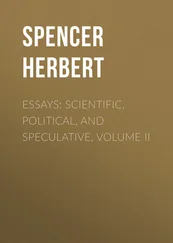Note IV. The argument set forth in the foregoing note, is in part designed to introduce a question which seems to require re-consideration—the origin of the minor planets or planetoids. The hypothesis of Olbers, as propounded by him, implied that the disruption of the assumed planet between Mars and Jupiter had taken place at no very remote period in the past; and this implication was shown to be inadmissible by the discovery that there exists no such point of intersection of the orbits of the planetoids as the hypothesis requires. The inquiry whether, in the past, there was any nearer approach to a point of intersection than at present, having resulted in a negative, it is held that the hypothesis must be abandoned. It is, however, admitted that the mutual perturbations of the planetoids themselves would suffice, in the course of some millions of years, to destroy all traces of a place of intersection of their orbits, if it once existed. But if this be admitted why need the hypothesis be abandoned? Given such duration of the Solar System as is currently assumed, there seems no reason why lapse of a few millions of years should present any difficulty. The explosion may as well have taken place ten million years ago as at any more recent period. And whoever grants this must grant that the probability of the hypothesis has to be estimated from other data.
As a preliminary to closer consideration, let us ask what may be inferred from the rate of discovery of the planetoids, and from the sizes of those most recently discovered. In 1878, Prof. Newcomb, arguing that "the preponderance of evidence is on the side of the number and magnitude being limited", says that "the newly discovered ones" "do not seem, on the average, to be materially smaller than those which were discovered ten years ago"; and further that "the new ones will probably be found to grow decidedly rare before another hundred are discovered". Now, inspection of the tables contained in the just-published fourth edition of Chambers' Descriptive Astronomy (vol. I) shows that whereas the planetoids discovered in 1868 (the year Prof. Newcomb singles out for comparison) have an average magnitude of 11∙56 those discovered last year (1888) have an average magnitude of 12∙43. Further, it is observable that though more than ninety have been discovered since Prof. Newcomb wrote, they have by no means become rare: the year 1888 having added ten to the list, and having therefore maintained the average rate of the preceding ten years. If, then, the indications Prof. Newcomb names, had they arisen, would have implied a limitation of the number, these opposite indications imply that the number is unlimited. The reasonable conclusion appears to be that these minor planets are to be counted not by hundreds but by thousands; that more powerful telescopes will go on revealing still smaller ones; and that additions to the list will cease only when the smallness ends in invisibility.
Commencing now to scrutinize the two hypotheses respecting the genesis of these multitudinous bodies, I may first remark concerning that of Laplace, that he might possibly not have propounded it had he known that instead of four such bodies there are hundreds, if not thousands. The supposition that they resulted from the breaking up of a nebulous ring into numerous small portions, instead of its collapse into one mass, might not, in such case, have seemed to him so probable. It would have appeared still less probable had he been aware of all that has since been discovered concerning the wide differences of the orbits in size, their various and often great eccentricities, and their various and often great inclinations. Let us look at these and other incongruous traits of them.
(1.) Between the greatest and least mean distances of the planetoids there is a space of 200 millions of miles; so that the whole of the Earth's orbit might be placed between the limits of the zone occupied, and leave 7 millions of miles on either side: add to which that the widest excursions of the planetoids occupy a zone of 270 millions of miles. Had the rings from which Mercury, Venus, and the Earth were formed been one-sixth of the smaller width or one-ninth of the greater, they would have united: there would have been no nebulous rings at all, but a continuous disk. Nay more, since one of the planetoids trenches upon the orbit of Mars, it follows that the nebulous ring out of which the planetoids were formed must have overlapped that out of which Mars was formed. How do these implications consist with the nebular hypothesis? (2.) The tacit assumption usually made is that the different parts of a nebulous ring have the same angular velocities. Though this assumption may not be strictly true, yet it seems scarcely likely that it is so widely untrue as it would be had the inner part of the ring an angular velocity nearly thrice that of the outer. Yet this is implied. While the period of Thule is 8.8 years, the period of Medusa is 3·1 years. (3.) The eccentricity of Jupiter's orbit is 0·04816, and the eccentricity of Mars' orbit is 0·09311. Estimated by groups of the first found and last found of the planetoids, the average eccentricity of the assemblage is about three times that of Jupiter and more than one and a half times that of Mars; and among the members of the assemblage themselves, some have an eccentricity thirty-five times that of others. How came this nebulous zone, out of which it is supposed the planetoids arose, to have originated eccentricities so divergent from one another as well as from those of the neighbouring planets? (4.) A like question may be asked respecting the inclinations of the orbits. The average inclination of the planetoid-orbits is four times the inclination of Mars' orbit and six times the inclination of Jupiter's orbit; and among the planetoid-orbits themselves the inclinations of some are fifty times those of others. How are all these differences to be accounted for on the hypothesis of genesis from a nebulous ring? (5.) Much greater becomes the difficulty on inquiring how these extremely unlike eccentricities and inclinations came to co-exist before the parts of the nebulous ring separated, and how they survived after the separation. Were all the great eccentricities displayed by the outermost members of the group, and the small by the innermost members, and were the inclinations so distributed that the orbits having much belonged to one part of the group, and those having little to another part of the group; the difficulty of explanation might not be insuperable. But the arrangement is by no means this. The orbits are, to use an expressive word, miscellaneously jumbled. Hence, if we go back to the nebulous ring, there presents itself the question—How came each planetoid-forming portion of nebulous matter, when it gathered itself together and separated, to have a motion round the Sun differing so much from the motions of its neighbours in eccentricity and inclination? And there presents itself the further question—How, during the time when it was concentrating into a planetoid, did it manage to jostle its way through all the differently-moving like masses of nebulous matter, and yet to preserve its individuality? Answers to these questions are, it seems to me, not even imaginable.
Turn we now to the alternative hypothesis. During revision of the foregoing essay, in preparation for that edition of the volume containing it which was published in 1883, there occurred the thought that some light on the origin of the planetoids ought to be obtained by study of their distributions and movements. If, as Olbers supposed, they resulted from the bursting of a planet once revolving in the region they occupy, the implications are:—first, that the fragments must be most abundant in the space immediately about the original orbit, and less abundant far away from it; second, that the large fragments must be relatively few, while of smaller fragments the numbers will increase as the sizes decrease; third, that as some among the smaller fragments will be propelled further than any of the larger, the widest deviations in mean distance from the mean distance of the original planet, will be presented by the smallest members of the assemblage; and fourth, that the orbits differing most from the rest in eccentricity and in inclination, will be among those of these smallest members. In the fourth edition of Chambers's Handbook of Descriptive and Practical Astronomy (the first volume of which has just been issued) there is a list of the elements (extracted and adapted from the Berliner Astronomisches Jahrbuch for 1890) of all the small planets (281 in number) which had been discovered up to the end of 1888. The apparent brightness, as expressed in equivalent star-magnitudes, is the only index we have to the probable comparative sizes of by far the largest number of the planetoids: the exceptions being among those first discovered. Thus much premised, let us take the above points in order. (1) There is a region lying between 2·50 and 2·80 (in terms of the Earth's mean distance from the Sun) where the planetoids are found in maximum abundance. The mean between these extremes, 2·65, is nearly the same as the average of the distances of the four largest and earliest-known of these bodies, which amounts to 2·64. May we not say that the thick clustering about this distance (which is, however, rather less than that assigned for the original planet by Bode's empirical law), in contrast with the wide scattering of the comparatively few whose distances are little more than 2 or exceed 3, is a fact in accordance with the hypothesis in question? [24](2) Any table which gives the apparent magnitudes of the planetoids, shows at once how much the number of the smaller members of the assemblage exceeds that of those which are comparatively large; and every succeeding year has emphasized this contrast more strongly. Only one of them (Vesta) exceeds in brightness the seventh star-magnitude, while one other (Ceres) is between the seventh and eighth, and a third (Pallas) is above the eighth; but between the eighth and ninth there are six; between the ninth and tenth, twenty; between the tenth and eleventh, fifty-five; below the eleventh a much larger number is known, and the number existing is probably far greater—a conclusion we cannot doubt when the difficulty of finding the very faint members of the family, visible only in the largest telescopes, is considered. (3) Kindred evidence is furnished if we broadly contrast their mean distances. Out of the 13 largest planetoids whose apparent brightnesses exceed that of a star of the 9·5 magnitude, there is not one having a mean distance that exceeds 3. Of those having magnitudes at least 9·5 and smaller than 10, there are 15; and of these one only has a mean distance greater than 3. Of those between 10 and 10·5 there are 17; and of these also there is one exceeding 3 in mean distance. In the next group there are 37, and of these 5 have this great mean distance. The next group, 48, contains 12 such; the next, 47, contains 13 such. Of those of the twelfth magnitude and fainter, 72 planetoids have been discovered, and of those of them of which the orbits have been computed, no fewer than 23 have a mean distance exceeding 3 in terms of the Earth's. It is evident from this how comparatively erratic are the fainter members of the extensive family with which we are dealing. (4) To illustrate the next point, it may be noted that among the planetoids whose sizes have been approximately measured, the orbits of the two largest, Vesta and Ceres, have eccentricities falling between .05 and .10, whilst the orbits of the two smallest, Menippe and Eva, have eccentricities falling between .20 and .25, and between .30 and .35. And then among those more recently discovered, having diameters so small that measurement of them has not been practicable, come the extremely erratic ones—Hilda and Thule, which have mean distances of 3.97 and 4.25 respectively; Æthra, having an orbit so eccentric that it cuts the orbit of Mars; and Medusa, which has the smallest mean distance from the Sun of any. (5) If the average eccentricities of the orbits of the planetoids grouped according to their decreasing sizes are compared, no very definite results are disclosed, excepting this, that the eight Polyhymnia, Atalanta, Eurydice, Æthra, Eva, Andromache, Istria, and Eudora, which have the greatest eccentricities (falling between .30 and .38), are all among those of smallest star-magnitudes. Nor when we consider the inclinations of the orbits do we meet with obvious verifications; since the proportion of highly-inclined orbits among the smaller planetoids does not appear to be greater than among the others. But consideration shows that there are two ways in which these last comparisons are vitiated. One is that the inclinations are measured from the plane of the ecliptic, instead of being measured from the plane of the orbit of the hypothetical planet. The other, and more important one, is that the search for planetoids has naturally been carried on in that comparatively narrow zone within which most of their orbits fall; and that, consequently, those having the most highly-inclined orbits are the least likely to have been detected, especially if they are at the same time among the smallest. Moreover, considering the general relation between the inclination of planetoid orbits and their eccentricities, it is probable that among the orbits of these undetected planetoids are many of the most eccentric. But while recognizing the incompleteness of the evidence, it seems to me that it goes far to justify the hypothesis of Olbers, and is quite incongruous with that of Laplace. And as having the same meanings let me not omit the remarkable fact concerning the planetoids discovered by D'Arrest, that "if their orbits are figured under the form of material rings, these rings will be found so entangled, that it would be possible, by means of one among them taken at hazard, to lift up all the rest,"—a fact incongruous with Laplace's hypothesis, which implies an approximate concentricity, but quite congruous with the hypothesis of an exploded planet.
Читать дальше












